Text
2023 ozone hole ranks 12th largest on record, find NOAA and NASA.
Hunga-Tonga eruption likely contributed to this year's ozone depletion.

NOAA scientists launch a weather balloon carrying an ozonesonde at the South Pole on October 1, 2023
0 notes
Text
Ozone layer recap – the hole story in brief.

The ozone layer is an important part of our atmosphere, absorbing almost all of the sun’s harmful ultraviolet (UV) radiation.
Long-term exposure to high levels of UV-B, or any exposure to UV-C, is harmful to human health and damaging to most animals, plants and microbes. In short, the ozone layer plays a crucial role in protecting all life on Earth.
In the 1970s, scientists first hypothesised that the ozone molecules (O3) which form the ozone layer could be destroyed by the chlorine from chlorofluorocarbons (CFCs), man-made chemicals which were used in thousands of products around the world, from air-conditioners and refrigerators to aerosol sprays, asthma inhalers and building insulation.
Over the following years, evidence supporting their concerns grew and when scientists discovered a hole in the ozone layer above the Antarctic in the mid-1980s, the international community was spurred into action. The Montreal Protocol was signed in 1987, with the explicit aim of protecting the ozone layer by phasing out ODS.
To this day, the Montreal Protocol is the only United Nations environmental treaty to be ratified by every country in the world and it is defined by a catalogue of successes:
99 per cent of the ODS controlled under the Protocol have been phased out
the ozone layer is recovering and, if the Protocol continues to be fully implemented, should return to 1980 levels by 2066
hundreds of millions of people worldwide will be protected from skin cancers and eye cataracts, resulting in about $1.8 trillion in global health benefits
as ODS are potent greenhouse gases, their phase-out has already avoided hundreds of billions of tonnes of carbon-dioxide equivalent emissions
in 2016, the Montreal Protocol formally became a climate treaty with the adoption of the Kigali Amendment, a global agreement to phase down production and consumption of hydrofluorocarbons (HFCs). HFCs do not deplete ozone but are climate-harming gases used as substitutes for ODS. Successful implementation of the Kigali Amendment will avoid up to a half a degree of warming by the end of the century.
The Montreal Protocol has done much over the past 36 years to secure its crown as the world’s most successful environmental treaty, but while its success deserves to be celebrated, its work is far from done.
The spirit of increasing ambition that has put the recovery of our ozone layer back on track, and has taken action to limit the climate impact of HFCs, now needs to be reinvigorated once more to address the next set of challenges lining up against it.
#ultraviolet radiation#ozone levels#ozone layer protection#ozone depleting substances#carbon dioxide#hydrofluorocarbons (HFCs)#carbon dioxide equivalent (gtco2e)#ozone molecules (O3)#methane (ch4)#montreal protocol
0 notes
Text
The Antarctic – is it still an ozone no-go zone?
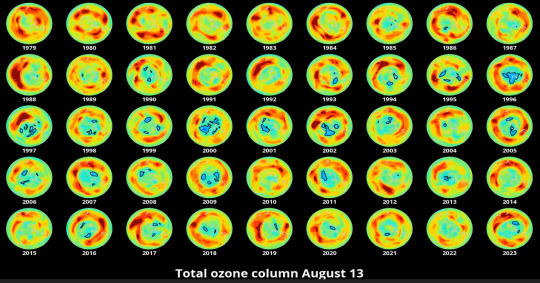
A hole in the ozone layer does still appear above the Antarctic each year, but thanks to the Montreal Protocol it has been slowly improving since the year 2000.
The hole in the ozone layer appears during the Antarctic springtime because extreme cold and strong winds create a polar vortex over the region. This speeds up the mechanism by which the ODS present in the stratosphere destroy ozone. In years where these conditions last longer than average, ozone depletion will also last longer – a potential cause for the unusually large and persistent ozone holes we have seen in the last few years, including in 2023.
This year’s early appearance of the ozone hole (which has now stabilised at around the 1990-2010 average) might also be linked to the 2022 eruption of the Hunga Tonga-Hunga Ha’apai volcano, which injected an unprecedented amount of water vapour into the atmosphere, possibly speeding up the chemical processes that cause ozone depletion.
While the past few years have reminded us that we can’t be complacent about ozone recovery, we need to be clear that they don’t imply that the Montreal Protocol is not working. On the contrary, the ozone holes we have seen in recent years would have been much worse without the Protocol and the ozone layer is still on track to recover.
Over the Antarctic, the ozone layer is expected to recover to its 1980 levels (before the appearance of the ozone hole) by about 2066. In other places, recovery is expected even sooner.
#stratospheric ozone#ozone hole#montreal protocol#ozone layer protection#ozone depleting substances#ozone recovery
1 note
·
View note
Text
Looking to the future – an ozone hole or an ozone whole?
The Montreal Protocol is often hailed as the world’s most successful environmental treaty. It has earned that status through consistently increasing ambition, by accelerating the pace of the ODS phase-out and expanding in scope to address HFCs.
EIA has a long history with the Montreal Protocol and we want to see its legacy of increasing ambition continue, which is why we’re working to make sure it is further strengthened, to ensure both swift ozone recovery and maximum climate benefits.
Below, we discuss some of the major challenges affecting ozone recovery today and, importantly, what EIA plans to do about them.
EIA’s ambitions – strengthening the Montreal Protocol
• Feedstocks: The term ‘feedstocks’ refers to substances that undergo a chemical transformation during the process of making other chemicals. The production, use and disposal of feedstocks results in harmful emissions, but ODS and HFC production for feedstock use is exempt from Montreal Protocol controls. That’s because it was previously thought that feedstocks only produced insignificant emissions, something a growing body of scientific evidence is proving to be wrong.
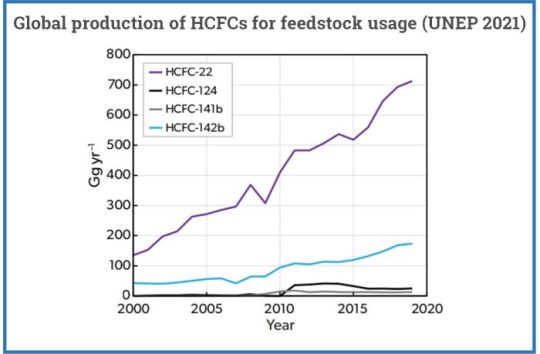
Data from the Montreal Protocol’s assessment panels suggest that feedstock emissions totalled about 145 million tonnes of CO2-equivalent in 2019 alone; that’s more than the total annual greenhouse gas emissions of a lot of countries! And since the most widely produced feedstocks are ODS, these emissions are slowing down ozone recovery.
It is therefore imperative that Parties agree measures to reduce industrial emissions from the production and use of feedstocks.
• Banks: The stores of ODS and HFCs contained in existing equipment (fridges, air-conditioning units, etc) are known as ‘banks’. Historically, there has been no obligation under the Protocol for countries to address the substantial emissions being released by banks.
Currently, banks are releasing about 150 million tonnes of CO2-equivalent emissions every year, representing a clear risk to both the climate and the ozone layer. In fact, recent studies have warned that emissions from banks of ozone-destroying CFCs alone could potentially delay Antarctic ozone hole recovery by about six years!
EIA is pushing for a global framework to recover and destroy ODS and HFC banks, which we believe should include a key role for the Montreal Protocol.
• Strengthening MRV+E: Monitoring, reporting, verification and enforcement (MRV+E) are at the core of what has made the Montreal Protocol a success. These are the processes that allow bans to be enforced, illegal trade to be shut down and progress to be tracked.
But with the 2018 revelation that CFC-11 was being illegally produced and used in eastern China (potentially delaying polar ozone recovery by up to three years), the need to strengthen MRV+E processes was thrown into sharp focus.
Fortunately, countries are now discussing how to strengthen the Montreal Protocol, and EIA is continuing to call for a comprehensive review of its MRV+E processes.
EIA’s ambitions – the ‘forgotten’ ODS
• Nitrous oxide (N2O): Nitrous oxide (N2O) is the most significant ODS in the world today. It is also the third most important greenhouse gas, after CO2 and methane. This means that N2O emissions simultaneously undermine both the recovery of the ozone layer, and global efforts to limit warming. Despite this, N2O is not subject to any controls under the Montreal Protocol and it is almost entirely overlooked in countries’ nationally determined contributions (NDCs) under the United Nations Framework Convention on Climate Change’s Paris Agreement.

N2O already contributed 0.1°C to global average warming between 2010-19 and, in terms of ozone depletion, emissions in 2020 alone were equivalent to more than 20 per cent of all CFC emissions in the year they peaked. Left unchecked, N2O emissions could double by 2050, presenting a serious threat to the recovery of the ozone layer.
In the past four decades, anthropogenic (human-caused) N2O emissions have increased by 30 per cent. The largest source of these emissions is agriculture, which accounts for about two-thirds of all human-produced N2O emissions, but other important sources include industry, transport, biomass burning and waste water.
There are a number of options and several potential venues that might be used to tackle N2O emissions, but clearly the Montreal Protocol, as the ozone treaty, will play an important role.
0 notes
Text
99% of ozone depleting chemicals have been plased out.

This year’s World Ozone Day (WOD) theme – Montreal Protocol: fixing the ozone layer and reducing climate change – reminds us of our responsibility to continue building on the considerable ozone and climate benefits already achieved under the Montreal Protocol through the phase-out of ozone depleting substances
MONTREAL PROTOCOL: Fixing the ozone layer and reducing climate change.
#world ozone day#montreal protocol#ozoneaction#climate change#ozone depleting substances#UNEP#16 september
0 notes
Text
10% of all global electricity consumed is for cooling.
Benefits of cooling efficiency and the Kigali Amendment.
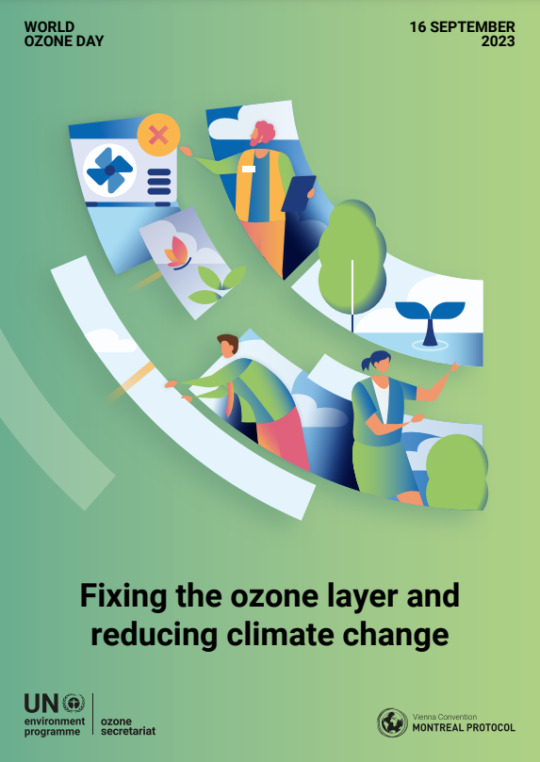
Action under the Kigali Amendment to the Montreal Protocol on Substances that Destroy the Ozone Layer (Montreal Protocol) will phase-down the production and use of hydrofluorocarbons (HFCs) and could avoid up to 0.4°C of global warming by 2100.
In a warming world, prosperity and civilization depend more on access to cooling.i The growing demand for cooling will contribute significantly to climate change. This is from both the emissions of HFCs and other refrigerants and CO2 and black carbon emissions from the mostly fossil fuel-based energy powering air conditioners and other cooling equipment.
These emissions are particularly dominant during periods of peak power demand, which are increasingly determined by demand for air conditioning. As the climate warms, the growing demand for cooling is creating more warming in a destructive feedback loop.
By combining energy efficiency improvements with the transition away from super-polluting refrigerants, the world could avoid cumulative greenhouse gas emissions of up to 210-460 gigatonnes of carbon dioxide equivalent (GtCO2e) over the next four decades, depending on future rates of decarbonisation. This is roughly equal to 4-8 years of total annual global greenhouse gas emissions, based on 2018 levels.
Cooling Emissions and Policy Synthesis Report.
WORLD OZONE DAY 2023 Theme: MONTREAL PROTOCOL: Fixing the ozone layer and reducing climate change.
#energy efficiency#ozoneaction#world ozone day#ozone depleting substances#refrigerants#greenhouse gas#carbon dioxide equivalent (GtCO2e)#decarbonisation.#Cooling emissions
0 notes
Text
Nearly 80% of all Hydrofluorocarbons (HFCs) globally are used for cooling.
Ratify Montreal Protocol’s Kigali Amendment.

What are Hydrofluorocarbons (HFCs)?
WORLD OZONE DAY 2023 - MONTREAL PROTOCOL: Fixing the ozone layer and reducing climate change.
0 notes
Text
Some HFCs are 1000s of time warming than CO2.
Fixing the ozone layer and reducing climate change. World Ozone Day 2023;
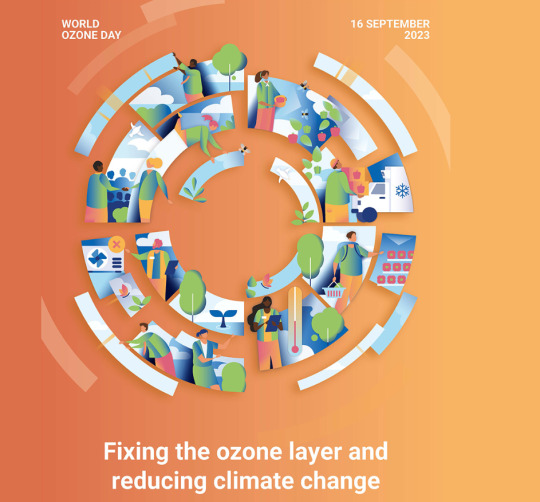
#Hydrofluorocarbons (HFCs)#climate change#uv index#world ozone day#unep#ozone levels#ozoneaction#carbon dioxide#CO2
0 notes
Text
Materials for use in World Ozone Day celebrations.
Regional Art Contests: The regional contests in Asia-Pacific and Latin America and the Caribbean were designed to increase public awareness of the Montreal Protocol and theKigali Amendment to protect the ozone layer and combat accelerated climate change.
The Artwork of the winners of the Latin America and the Caribbean art contest organized between October 2022 – March 2023, may be used in other regions for awareness purposes. The artwork is available at: The Planet is Your Canvas
The Artwork of the winners of the Asia Pacific Regional Ozone2Climate Art contest organized between September 2021 – March 2022, can also be used by other regions for awareness purposes. The artwork is available at the Hall of Fame.
These are suitable for outreach to the public.
How to set up and manage logbooks or refrigeration, air-conditioning, heat pump and other types of equipment: This technical brief reflects the Polish experience of setting up and
managing logbooks for refrigeration, air-conditioning, heat pump (RACHP) and other typesof equipment. It also provides examples of similar equipment databases used in other developed and developing countries.
This is suitable for outreach to the RAC servicing technicians and RAC associations.
Watch out for Illegal Trade of HCFCs and HFCs: Lessons learnt from the Global Montreal Protocol Award for Customs and Enforcement Officers. This publication provides an
analysis of the cases submitted in the context of the Global Montreal Protocol Award for Customs and Enforcement Officers.
This is suitable for outreach to the Customs and enforcement community.
Considerations for Establishing National HFC Quota System: The Parties to the Kigali Amendment need to establish a mechanism to effectively control the production and consumption of hydrofluorocarbons (HFCs), a group of greenhouse gases that are controlled under the Montreal Protocol. Like the hydrochlorofluorocarbon (HCFC) phase-out, an
effective quota system can play a vital role in assisting Parties to be in compliance with their HFC consumption targets.
This is suitable for outreach to NOU staff, other government agencies and other stakeholders involved in the licensing and quotas process.
Five Posters on the Kigali Amendment: OzonAction developed five related posters for different target audiences, with the following slogans: 1. Let´s change this; 2. Make the right decision; 3. Let´s continue working for our planet; 4. For an increasingly sustainable planet; and Keep them cool without warming the planet. The posters are available in English, French, Russian and Spanish.
This is suitable for outreach to the general public and the key Montreal Protocol stakeholders
Every Action Counts: Kigali Amendment: This brochure targets the general public and explains in a simplified manner what the Montreal Protocol and its Kigali Amendment signify. It includes some actions that everybody can do to support the Kigali Amendment. It also covers the relationship between the Kigali Amendment and Sustainable Development Goals. It introduces some examples of successful communication campaigns on the Kigali Amendment.
This is suitable for outreach to the general public and the key Montreal Protocol stakeholders.
Women in Cooling: A Worldwide Survey: To better understand the background, motivation, challenges, and opportunities faced by women working in RACHP a worldwide survey was undertaken by the International Institute of Refrigeration (IIR) and UNEP OzonAction in cooperation with several partners.
This is suitable for outreach to RAC servicing technicians, RAC associations, education and training stakeholders, Government gender departments, and the general public.
Gender Mainstreaming in the Montreal Protocol: Experiences in Latin America and the Caribbean: OzonAction in Latin America and the Caribbean has prepared this publication contextualizing the international legal framework and the instruments available regarding rights, gender, and equality aspects, in order to give visibility to the actions, good practices and progress achieved in a non-exhaustive group of countries of the region.
This is suitable for outreach to the general public, the key Montreal Protocol stakeholders, Other government agencies, Government gender departments, and the general public.
Poster on Gender Mainstreaming in Montreal Protocol: OzonAction has developed a poster on gender mainstreaming which is available in English, French and Spanish.
This is suitable for outreach to the general public and the key Montreal Protocol stakeholders
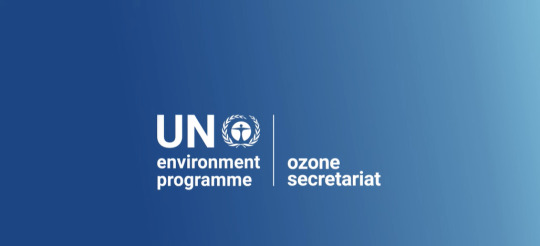
#International Institute of Refrigeration (IIR)#unep#ozoneaction#world ozone day#ozone depleting substances#stratospheric ozone
0 notes
Text
Statement from Inger Andersen, UNEP Executive Director on World Ozone Day 2023; September 16th.
youtube
Dear National Ozone Officers,
On 16 September each year, we all celebrate the commitments made by Parties in 1987 to protect human life and the environment by implementing the Montreal Protocol on Substances that Deplete the Ozone Layer.
This year’s World Ozone Day (WOD) theme – Montreal Protocol: fixing the ozone layer and reducing climate change – reminds us of our responsibility to continue building on the considerable ozone and climate benefits already achieved under the Montreal Protocol through the phase-out of ozone depleting substances, by enthusiastically pursuing the objectives of the Kigali Amendment to phase down HFC production and consumption. World Ozone Day provides an excellent opportunity to outreach the successes and new developments of the Montreal Protocol and to increase support for your national compliance strategy among the public and key stakeholder groups.
With the COVID-19 pandemic now officially over, this year countries can now celebrate WOD more fully and raise awareness about the Montreal Protocol achievements with a wider audience. OzonAction is pleased to provide you with the information resources listed below that can be used as part of your national celebrations (all items can be downloaded). Please also refer to the Ozone Secretariat’s WOD website for other related resources.
We would appreciate receiving information or reports about your country's WOD activities for posting on our website. Please send this information to your Montreal Protocol Regional Coordinator or directly to Ms. Jo Chona at [email protected].
It is our sincere hope that the Network and thematic meetings, information and awareness resources, compliance assistance, and project support that OzonAction’s Compliance Assistance Programme (CAP) teams provide are helping you and the members of your National Ozone Unit to deliver your country’s Montreal Protocol compliance strategy and programme more effectively.
Once again, we thank you for your ongoing commitment to maintaining compliance with the Montreal Protocol and your excellent work in implementing your national strategies and projects. On behalf of the entire OzonAction CAP team, I wish you great success in this year's WOD celebrations!
Yours sincerely,
James S. Curlin
Head, OzonAction Branch
UNEP Law Division
#ozoneaction#world ozone day#montreal protocol#Vienna convention#ozone levels#climate change#Statement#16 september#unep#Youtube
0 notes
Text
Let’s harness the spirit of the Vienna Convention and the Montreal Protocol to build a world where humans, nature and the planet thrive together.
Limiting the rise in global temperature to 1.5°Celsius is still possible if we immediately and drastically accelerate climate action. United Nations Secretary-General on World Ozone Day 2023
0 notes
Text
Scientific Assessment of Ozone Depletion: 2022.

Providing highlights on the health of the ozone layer in the meantime, the full Scientific Assessment of Ozone Depletion: 2022 Executive Summary report will be available soon.
#ozone depleting substances (odss)#stratospheric ozone#ozone layer protection#ozone layer#world meteorological organization#ozoneaction#NASA#UN Environment Programme#NOAA
0 notes
Text
Protecting the Ozone Layer - 35th Anniversary Edition.

The United Nations General Assembly established International Day for the Preservation of the Ozone Layer on September 16th, and commemorates the 1987 signing of the Montreal Protocol on Substances that Deplete the Ozone Layer that protects Earth against the harmful effects of ultraviolet radiation.
Marco Gonzalez, Stephen O. Andersen, and Sally Rand, with the United Nations Environment Programme’s Ozone Secretariat, will release a new book celebrating the 35th Anniversary of the Montreal Protocol. The book highlights successes and documents innovation during the first 35 years and inspires new ambition to strengthen protection of stratospheric ozone and climate before Earth passes tipping points.
The book tells the story of the Montreal Protocol, revealing a model of cooperation, collaboration, universal ratification, record of compliance with over 99 per cent of controlled ozone-depleting substances (ODSs) phased out, the ozone layer on the path to recovery, the 2007 Montreal Adjustment, and the 2016 Kigali Amendment moving the Montreal Protocol further into environmental protection.
Unfinished business includes: HCFC phase out, ODS bank management, HFC phase down, uncontrolled ozone-depleting greenhouse gas, nitrous oxide (N2O), feedstock exemptions for plastics production, and dumping of obsolete cooling appliances.
The book is anticipated to be released at 34th Meeting of the Parties to the Montreal Protocol on 31 October 2022
#HCFC phase out#ODS bank management#HFC phase down#uncontrolled ozone-depleting greenhouse gas#nitrous oxide (N2O)#Montreal Protocol
0 notes
Text
UV Index Forecast for US Cities.

The UV Index provides a forecast of the expected risk of overexposure to UV radiation from the sun. The National Weather Service calculates the UV Index forecast for most ZIP codes across the U.S., and EPA publishes this information. The UV Index is accompanied by recommendations for sun protection and is a useful tool for planning sun-safe outdoor activities.
Ozone depletion, as well as seasonal and weather variations, cause different amounts of UV radiation to reach the Earth at any given time. Taking these factors into account, the UV Index predicts the level of solar UV radiation and indicates the risk of overexposure on a scale from 0 (low) to 11 or more (extremely high). A special UV Alert may be issued for a particular area, if the UV Index is forecasted to be higher than normal.
Level of Ultraviolet (UV) rays

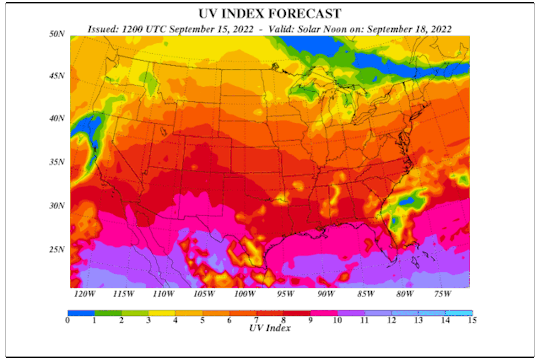


Ultraviolet (UV) Index Forcast
0 notes
Text
Montreal Protocol@35: global cooperation protecting life on earth.
The theme for the International Day for the Preservation of the Ozone Layer 2022, to be marked on 16 September, is Montreal Protocol@35: global cooperation protecting life on earth.
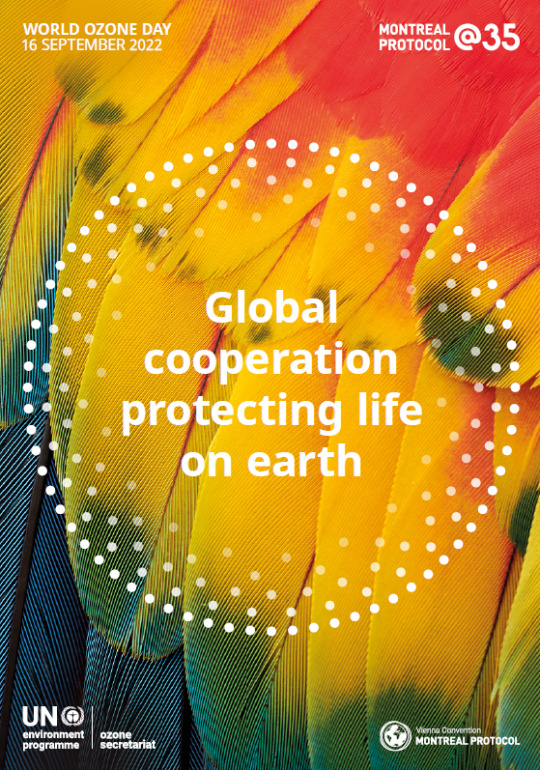
The theme recognises the wider impact the Montreal Protocol has on climate change and the need to act in collaboration, forge partnerships and develop global cooperation to address climate challenges and protect life on earth for future generations.
In a human lifetime, the mid-thirties can be a time of reflection: to think about what we have achieved and look ahead to what more we can accomplish. It is no different for the Montreal Protocol to Protect the Ozone Layer, the most successful environmental treaty to date.
As the treaty turns 35 on World Ozone Day, we will remember how the Montreal Protocol ended one of the biggest threats ever to face humanity as a whole: the depletion of the ozone layer. When the world found out that ozone-depleting gases used in aerosols and cooling were creating a hole in the sky, they came together. They showed that multilateralism and effective global cooperation worked and they phased out these gases. Now the ozone layer is healing, allowing it once again to shield humanity from the sun’s ultraviolet radiation.
This action has protected millions of people from skin cancer and cataracts over the years since. It allowed vital ecosystems to survive and thrive. It safeguarded life on Earth. And it slowed climate change: if ozone-depleting chemicals had not been banned, we would be looking at a global temperature rise of an additional 2.5°C by the end of this century. This would have been a catastrophe.
In the year of Stockholm+50, marking five decades since the landmark conference that kick-started today’s environmental global movement, the Montreal Protocol has much more to give. Under the Kigali Amendment, nations have committed to phase down hydrofluorocarbons – a move that could avoid up to 0.4°C of global temperature rise by the end of the century. The Protocol and its Amendment are helping the world adopt climate friendly and energy-efficient cooling technology.
What does this mean for humanity? As we continue to protect the ozone layer, it will continue to safeguard us and all life on Earth. It also means a cooler planet as more countries ratify the Amendment. It means more people being able to access vital cooling technology without further warming the planet. It also means the Protocol continuing to send a clear and lasting message: global cooperation to protect life on Earth is our best chance at a brighter future for everyone.
Global cooperation protecting life on earth.
0 notes
Text
According to experts, the ozone layer is estimated to return to the pre-1980 level by the year 2050.
‘Montreal Protocol – Keeping us, our food, and vaccines cool.’ was the theme of theInternational Day for the Preservation of the Ozone Layer 2021.
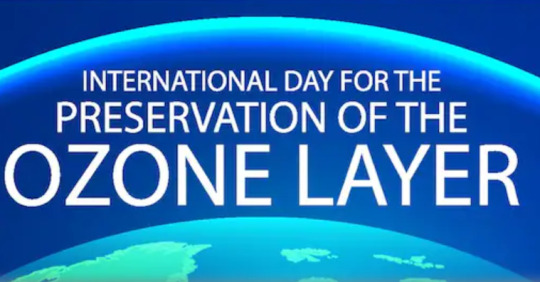
Humans have been a threat to the natural paradigm of the blue planet. One of the consequences of the oblivious actions harming the environment was the depletion of the fragile layer of gas that protects people on earth from harmful cosmic rays, called the ozone layer.
The Montreal Protocol was a deal for countries across the globe to curb the existence of all ozone-depleting substances such as aerosols, chlorofluorocarbon, halons, etc., widely used for cooling and refrigeration purposes. The usage of such harmful substances resulted in a hole in the ozone layers in Antarctica, first discovered in 1970, which led to acute global warming in the past 20 years.
0 notes
Text
Ozone for life: 35 years of ozone layer protection.
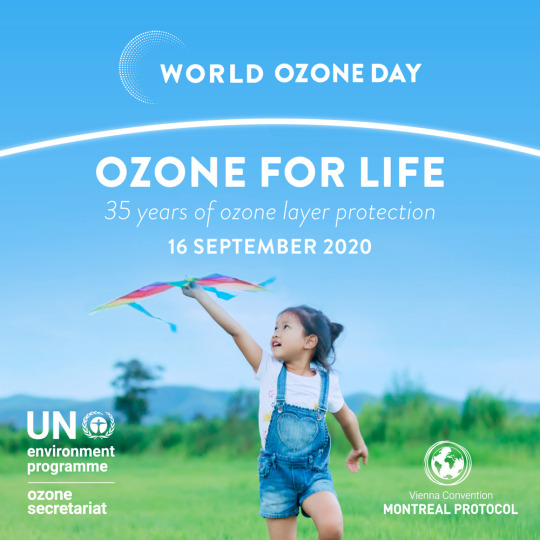
The slogan of the day, ‘Ozone for life’, reminds us that not only is ozone crucial for life on Earth, but that we must continue to protect the ozone layer for future generations.
This year, we celebrate 35 years of the Vienna Convention and 35 years of global ozone layer protection. Life on Earth would not be possible without sunlight. But the energy emanating from the sun would be too much for life on Earth to thrive were it not for the ozone layer. This stratospheric layer shields Earth from most of the sun’s harmful ultraviolet radiation. Sunlight makes life possible, but the ozone layer makes life as we know it possible.
So, when scientists working in the late 1970s discovered that humanity was creating a hole in this protective shield, they raised the alarm. The hole – caused by ozone-depleting gases (ODSs) used in aerosols and cooling, such as refrigerators and air-conditioners – was threatening to increase cases of skin cancer and cataracts, and damage plants, crops, and ecosystems.
The global response was decisive. In 1985, the world’s governments adopted the Vienna Convention for the Protection of the Ozone Layer. Under the Convention’s Montreal Protocol, governments, scientists and industry worked together to cut out 99 per cent of all ozone-depleting substances. Thanks to the Montreal Protocol, the ozone layer is healing and expected to return to pre-1980 values by mid-century. In support of the Protocol, the Kigali Amendment, which came into force in 2019, will work towards reducing hydrofluorocarbon (HFCs), greenhouse gases with powerful climate warming potential and damaging to the environment.
World Ozone Day, held on September 16, celebrates this achievement. It shows that collective decisions and action, guided by science, are the only way to solve major global crises. In this year of the coronavirus pandemic that has brought such social and economic hardship, the ozone treaties’ message of working together in harmony and for the collective good is more important than ever.
#ozone-depleting substances#ozone layer protection#world ozone day#16 September#Ozone secretariat#Ozoneaction
0 notes